Enhancing Soft Skills for DevOps Engineers: Essential Non-Technical Skills to Thrive
Influencing Persuasion and Leadership
Creating Safety and Trust
Welcome back! I’m Michael Forrester. In this lesson, we’ll dive into why trust and safety are the cornerstones of leadership, high-performing DevOps cultures, and empowered teams.
Why Safety and Trust Matter
Trust isn’t just a buzzword—it’s the foundation for effective collaboration, continuous innovation, and reliable delivery. When behavioral expectations, communication paths, and reliability standards are clear, teams operate more efficiently and deliver higher-quality outcomes.
Note
Building trust and safety early accelerates DevOps maturity by enabling faster feedback loops and lowering delivery risk.
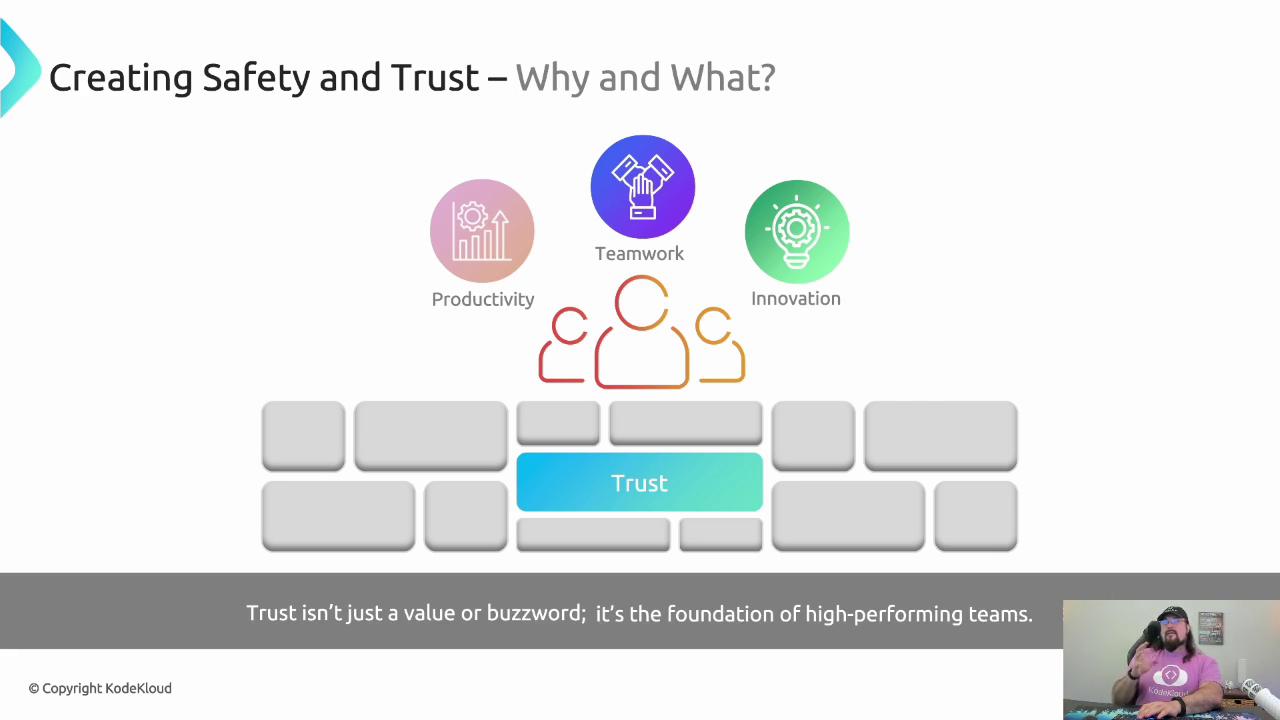
Pillars of Trust and Safety
Trust and safety reinforce each other in every DevOps workflow:
| Pillar | Definition |
|---|---|
| Trust | Confidence in decisions, reliability, transparency, and visibility of work. |
| Safety | Psychological security to ask questions, share ideas, and raise concerns without fear. |
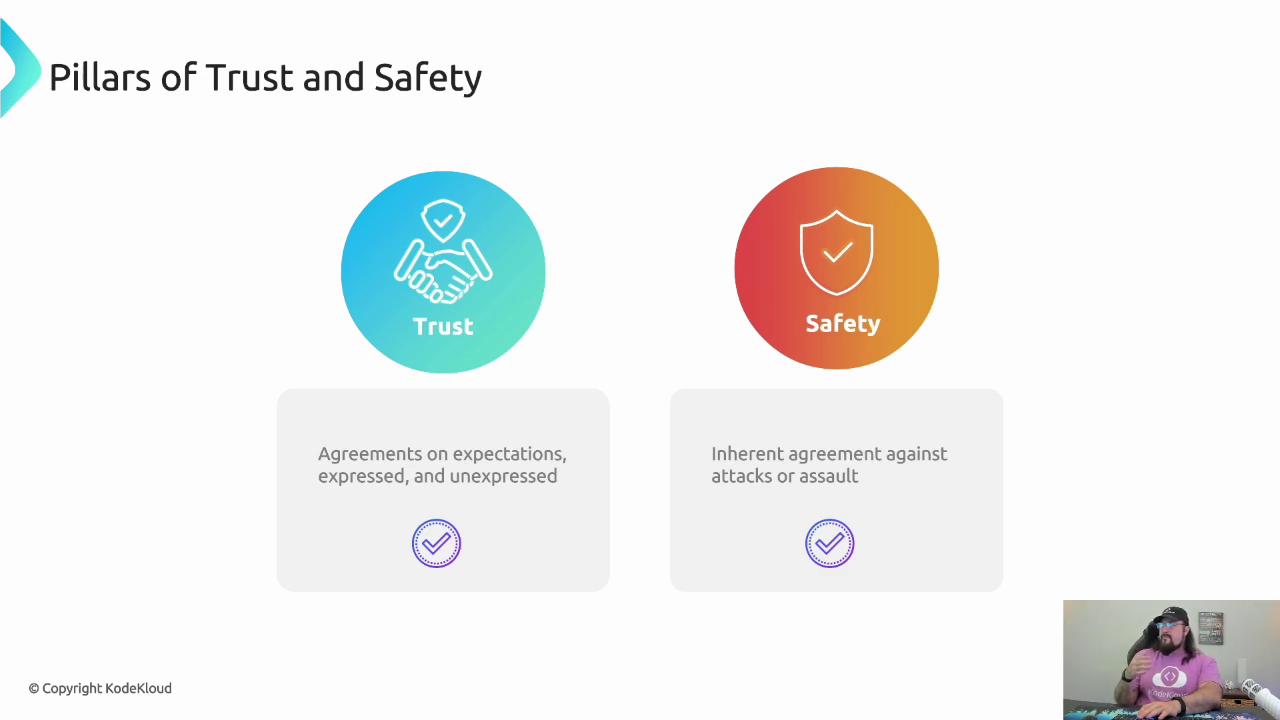
Building Trust Through Agreements
Trust grows from clarity and consistency in what we promise and deliver:
- Identify Agreements
- Explicit: job descriptions, SLAs, compliance checks.
- Implicit: response times, team norms, code review etiquette.
- Communicate Clearly
- Share OKRs, cloud-first strategies, automation roadmaps, and delivery timelines.
- Align Actions and Words
- Ensure processes, commitments, and leadership style match stated values.
- Seek Continuous Feedback
- Check in with managers, clients, and end users to validate expectations.
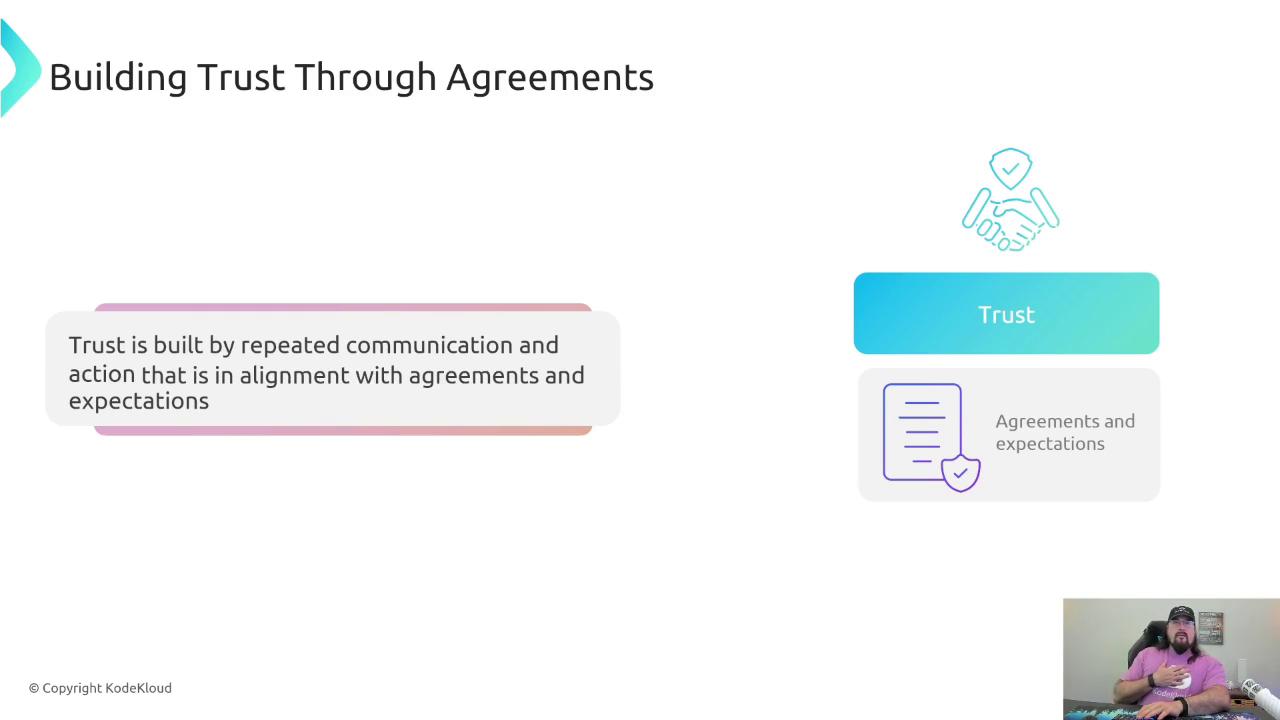
Fostering a Safe Environment
Psychological safety spans physical, emotional, and mental well-being:
- Physical Safety: Secure workstations, ergonomic setups, and healthy environments.
- Emotional Safety: Freedom to share ideas without ridicule or reprisal.
- Mental Safety: Recognition of individual states—celebrate wins, support during setbacks.
Leaders can prevent burnout by rotating high-pressure tasks, offering time off, and providing personal support resources.

Cultivating Trust and Safety Daily
Embed these practices into your DevOps culture:
- Open Communication: Encourage questions, retrospectives, and feedback loops.
- Opportunities for Growth: Support learning paths, certifications, and role advancements.
- Supportive Atmosphere: Recognize achievements, mentor teammates, and balance challenge with care.
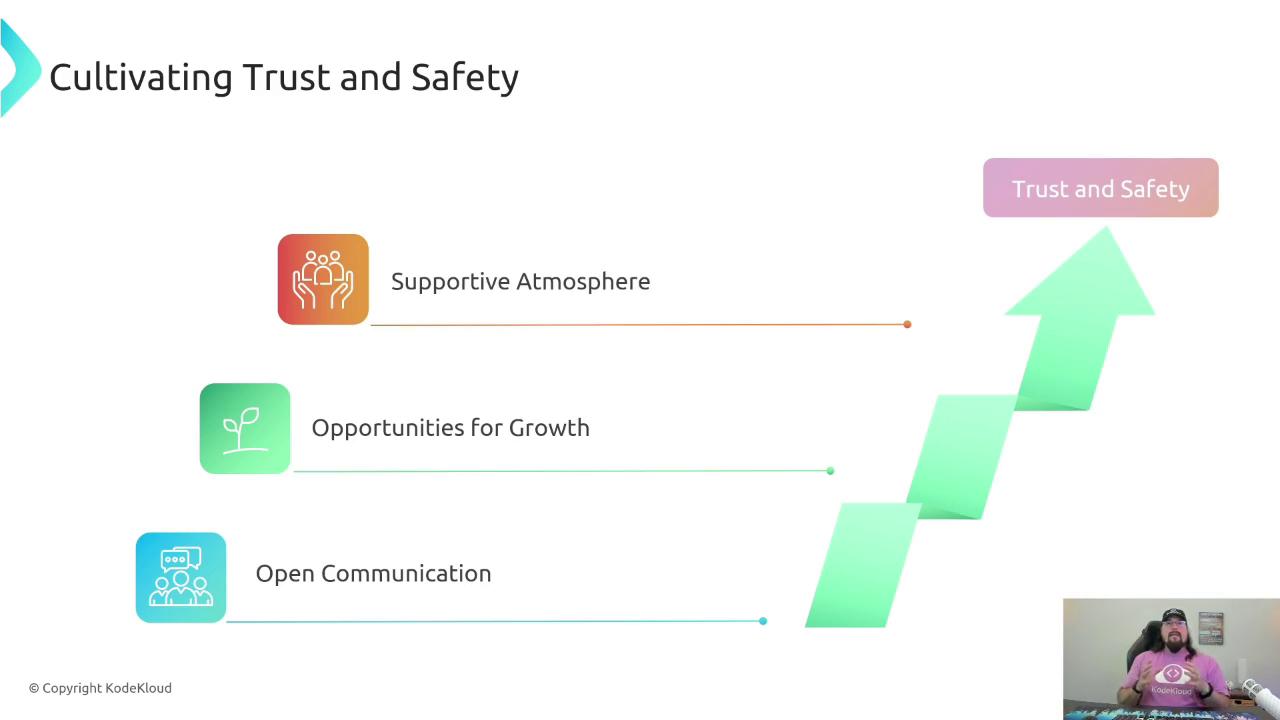
Leading by Example
Your leadership style becomes your team’s default behavior:
- Celebrate wins (or gently tease with permission).
- Model transparency, empathy, and methodical problem-solving.
- Demonstrate accountability by owning both successes and failures.
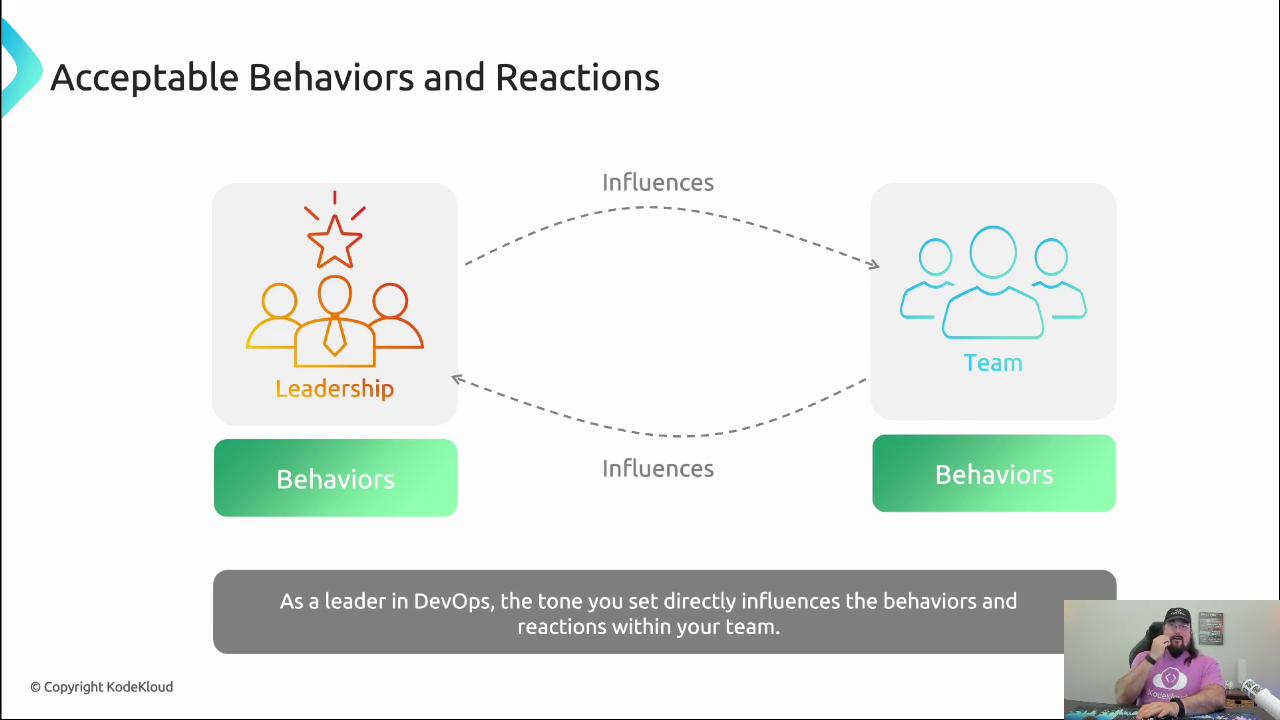
Establishing Clear Goals and Boundaries
- Define specific, measurable goals.
- Outline team and individual boundaries.
- Agree on collaborative workflows and escalation paths.
- Continuously loop in feedback and refine processes.
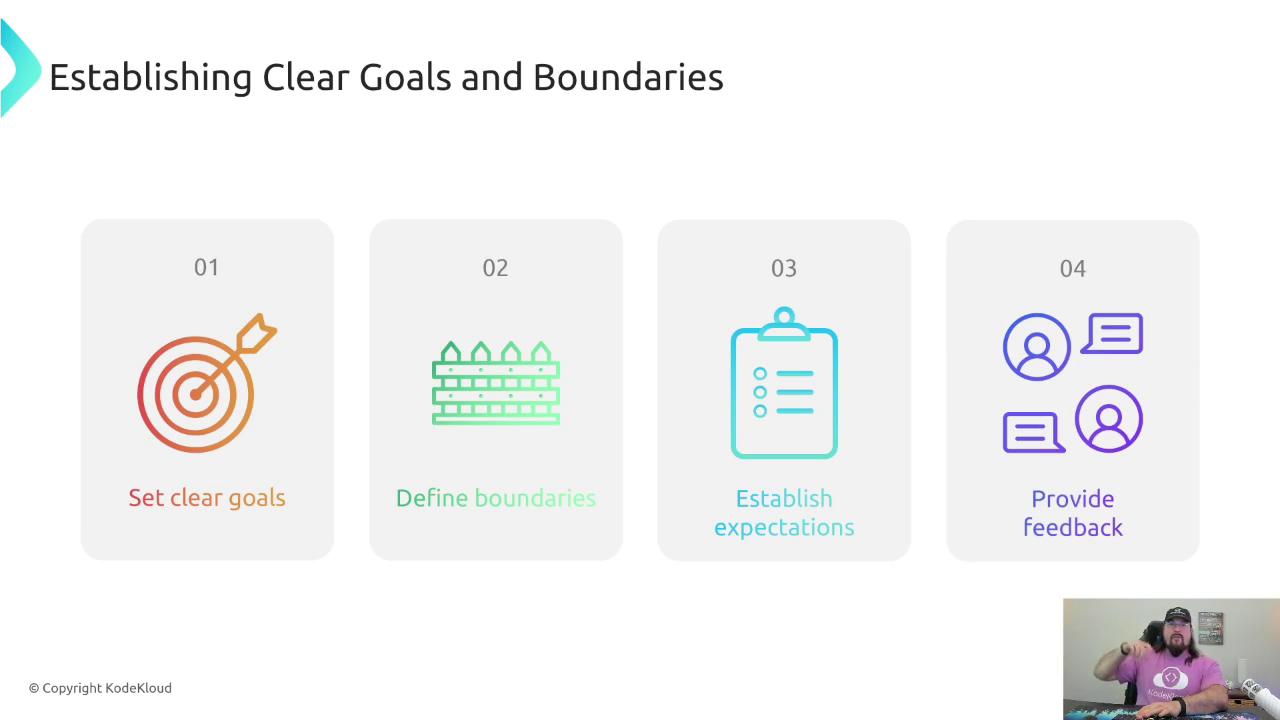
Acting in Alignment With Agreements
Maintain trust by honoring—or proactively renegotiating—your commitments:
- Keep Agreements: Deliver on time and as promised.
- Renegotiate Early: Communicate delays, scope changes, or blockers.
- Avoid Silent Breaks: Uncommunicated shifts can erode trust and safety.
Warning
Failing to inform stakeholders of changes can lead to mistrust and project delays. Always renegotiate before deadlines slip.

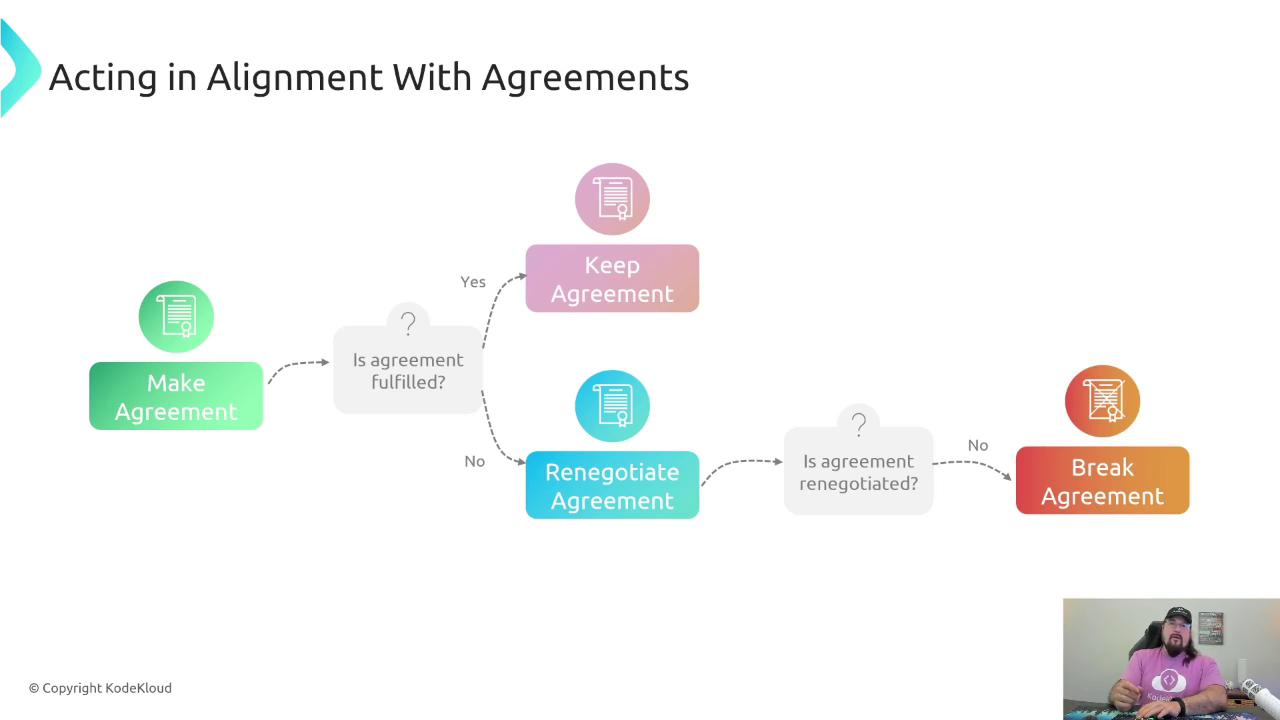
Trust and Safety in Action
A real-world example: When a chronically late team member finally transitioned out, the team’s confidence and collaboration rebounded immediately, driving performance back to peak levels.
Summary
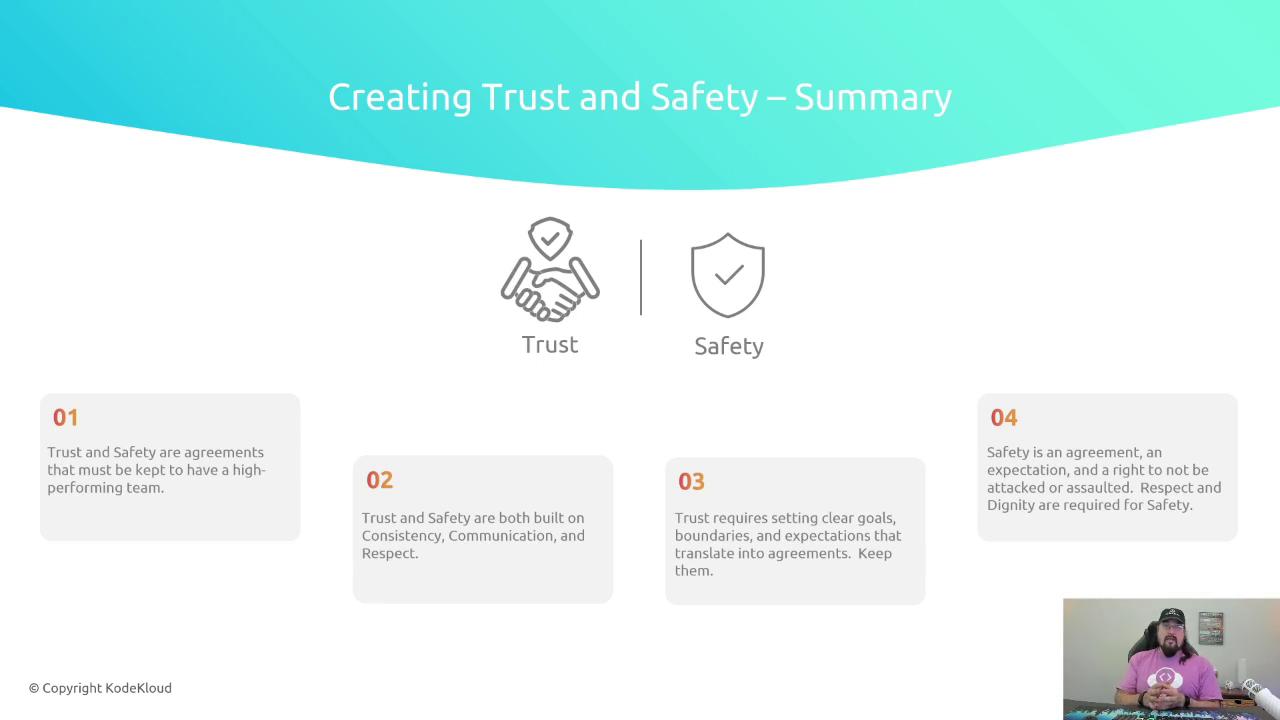
- Trust and safety are non-negotiable for high-performance DevOps.
- Build both with consistency, transparent communication, and mutual respect.
- Set clear goals, boundaries, and collaborative workflows.
- Honor commitments or renegotiate proactively to sustain confidence.
Links and References
- Psychological Safety in DevOps
- Kubernetes Basics
- Continuous Delivery Practices
- Leading High-Performance Teams
Watch Video
Watch video content